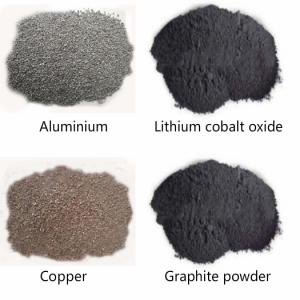How to recycle Waste cathode material (positive plates) of car lithium battery
How to recycle Waste cathode material (positive plates) of car lithium battery
Because the global lithium battery cathode material production needs lithium, cobalt, manganese, nickel and other metal resources are rich, the consumer electronics, the new energy automobile appliance downstream application market expands rapidly, the cost of cathode material, cathode material, separator, and electrolyte is more than 80% of the cost of the battery. The cost of cathode materials also accounts for about 40 percent of the total cost of lithium-ion batteries. Therefore, it is necessary to recover the active materials of the spent positive and negative plates of lithium batteries.
Crushing equipment for the positive and negative plate of lithium battery

How to correctly carry out positive and negative plate recycling treatment, which of these positive and negative plate recycling treatment equipment are:
1. The material of the negative plate of the waste lithium battery is transported by a conveyor to a grinder and crushed to 15-25 mesh; then the material after being crushed by a grinder is transported to an analytical machine, where the crushed material is winnowed and separated, after separating the metal material and the graphite powder, the separated graphite powder is conveyed to the aggregate device by an induced draft fan for collection, and the waste gas in the aggregate device is purified by a pulse purifier for output;
2. Through the analysis of the metal material out of the machine into the screening screen, the screening screen will further separate of metal materials. The graphite powder and the metal part are separated, the graphite powder which is exported from the grading screen is fed into the aggregate device through an induced draft fan at one output end, and the copper powder which is selected from the grading screen is fed into the magnetic separator through the third output end, a magnetic separator separates the nickel from the copper powder,
3. The other materials selected from the classification screen enter the specific gravity separator through the second output end. The specific gravity separator separates the other materials selected from the classification screen and further separates the copper powder and the graphite powder, the separated graphite powder is collected by the induced draft fan into the collector. Then the non-metallic graphite powder, the metallic copper powder, and the nickel in the negative plate are separated.
Based on the structure of anode and cathode of lithium battery and the material characteristics of copper and carbon powder, the waste anode materials of lithium battery were separated and recovered by a combined process of hammer crushing, vibration screening, and air separation. ICP-AES was used to analyze the metal grade of the sample and the product. The results show that the grade of copper is 92.4% when the particle size is larger than 0.250 mm, and the grade of carbon powder is 96.6% when the particle size is smaller than 0.125 mm When the particle size is from 0.125 mm to 0.250 mm, the grade of copper is lower, and the recovery of copper and carbon powder can be achieved by air separation. In the process of air separation, the recovery of copper reaches 92.3% when the operating air velocity is 1.00 m/s, 84.4%.





